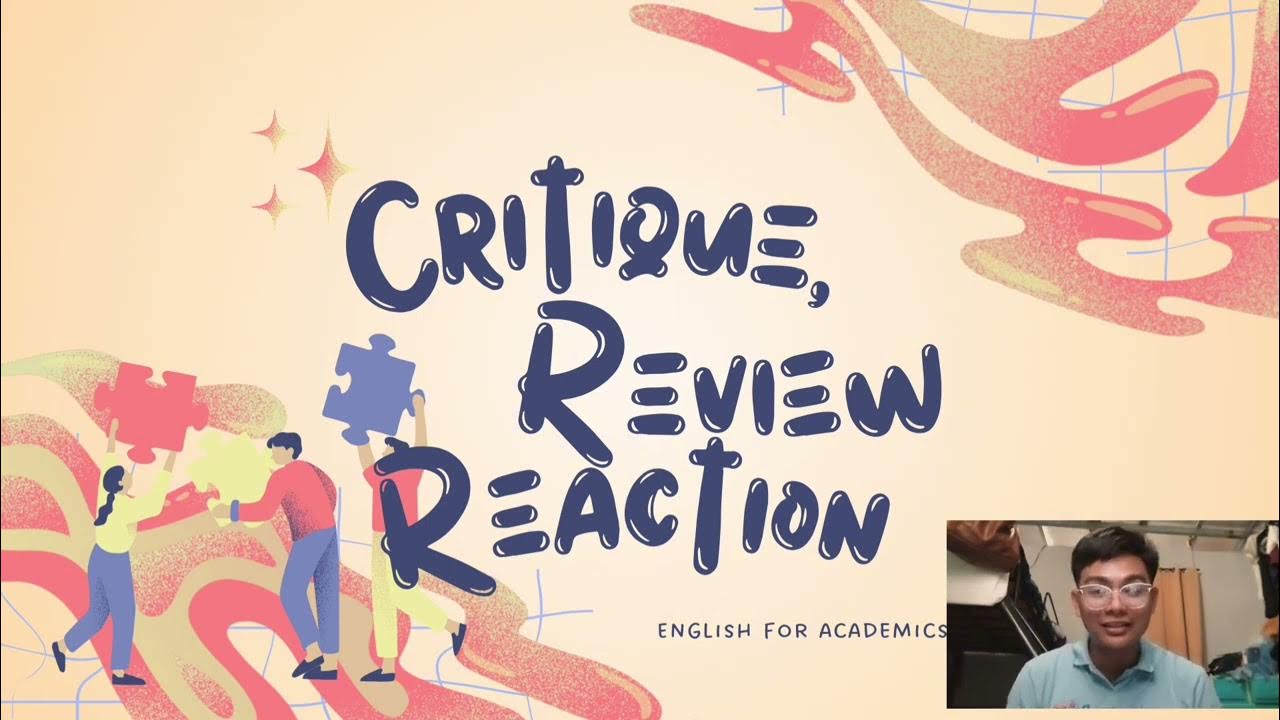Literary Analysis Lecture
Summary
TLDRThis script is a comprehensive guide to writing a literary analysis paper. It clarifies that analysis is not evaluation but interpretation and argumentation with evidence from the text. The guide covers the importance of a strong introduction with a hook, mentioning the author and title, providing a brief plot synopsis, and stating the thesis. It also details the structure of body paragraphs, emphasizing the use of textual evidence and commentary to support the thesis. The script concludes with advice on crafting a concluding paragraph that restates the thesis, broadens the discussion, and connects the analysis to broader themes or current relevance. Tips on using present tense, citing sources, and adhering to formal essay rules are also provided.
Please replace the link and try again.
Q & A
What is the main focus of a literary analysis?
-A literary analysis focuses on interpreting literature to uncover its deeper meaning, rather than evaluating it based on personal preferences.
How does a literary analysis differ from an evaluation?
-A literary analysis delves into the deeper meanings and the author's communication methods, whereas an evaluation is more about personal judgments like whether a movie is good or bad.
What are some literary devices that can be used to support an argument in a literary analysis?
-Literary devices such as plot, setting, point of view, characterization, symbols, metaphors, genres, and irony can be used to support arguments in a literary analysis.
Why is it beneficial to dissect a piece of literature?
-Dissecting literature can lead to a deeper, more meaningful understanding of the piece and its themes, rather than ruining the experience.
How can a literary analysis paper serve as a persuasive essay?
-A literary analysis paper can be used to create a clear and cohesive argument using evidence and literary devices to support the main point.
What are the four essential elements of an introduction in a literary analysis paper?
-The introduction should include a hook, mention of the author and title, a brief plot synopsis, and the thesis statement.
What is a hook in the context of a literary analysis introduction?
-A hook is a compelling opening statement designed to engage the reader and introduce the topic of the paper.
Can you provide an example of a hook used in the script?
-An example of a hook from the script is a startling fact about the number of deaths during World War II, used to connect to the themes explored in 'Lord of the Flies'.
What should a thesis statement in a literary analysis include?
-A thesis statement should relate to the theme of the work and indicate how the author communicates that theme.
How should textual evidence be incorporated into a body paragraph?
-Textual evidence should be embedded within the paragraph using quotes, paraphrases, or references to the text, and followed by commentary explaining its significance.
Why is it important to use transitions in a literary analysis paper?
-Transitions help to connect ideas within sentences and paragraphs, creating a cohesive and smoothly flowing essay.
What should a concluding paragraph in a literary analysis include?
-A concluding paragraph should restate the thesis, broaden the discussion, and provide a final thought or insight related to the literary work.
Outlines

This section is available to paid users only. Please upgrade to access this part.
Upgrade NowMindmap

This section is available to paid users only. Please upgrade to access this part.
Upgrade NowKeywords

This section is available to paid users only. Please upgrade to access this part.
Upgrade NowHighlights

This section is available to paid users only. Please upgrade to access this part.
Upgrade NowTranscripts

This section is available to paid users only. Please upgrade to access this part.
Upgrade NowBrowse More Related Video

Literary Analysis: A Beginner's Guide to Writing a Literary Analysis Essay

Paano gumawa ng maayos na Critique Paper?

Bedanya Kritik Sastra dan Esai

Writing the Critique, Review, and Reaction Paper | Lesson 2

20 Literary Devices you NEED to know!

How to write a Review Paper | How to write a Review Article | Step-by-step process explained
5.0 / 5 (0 votes)